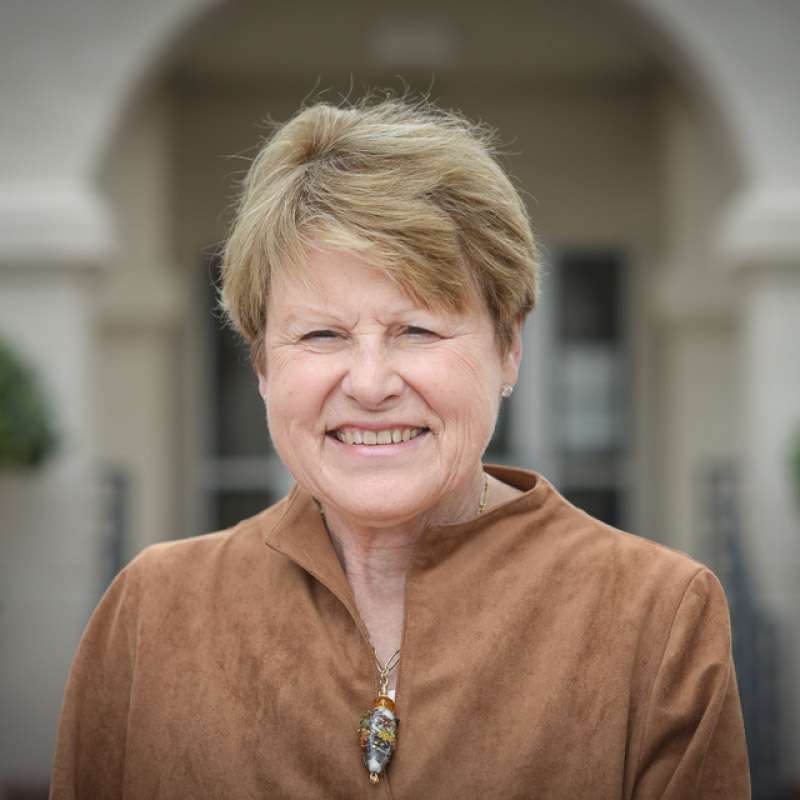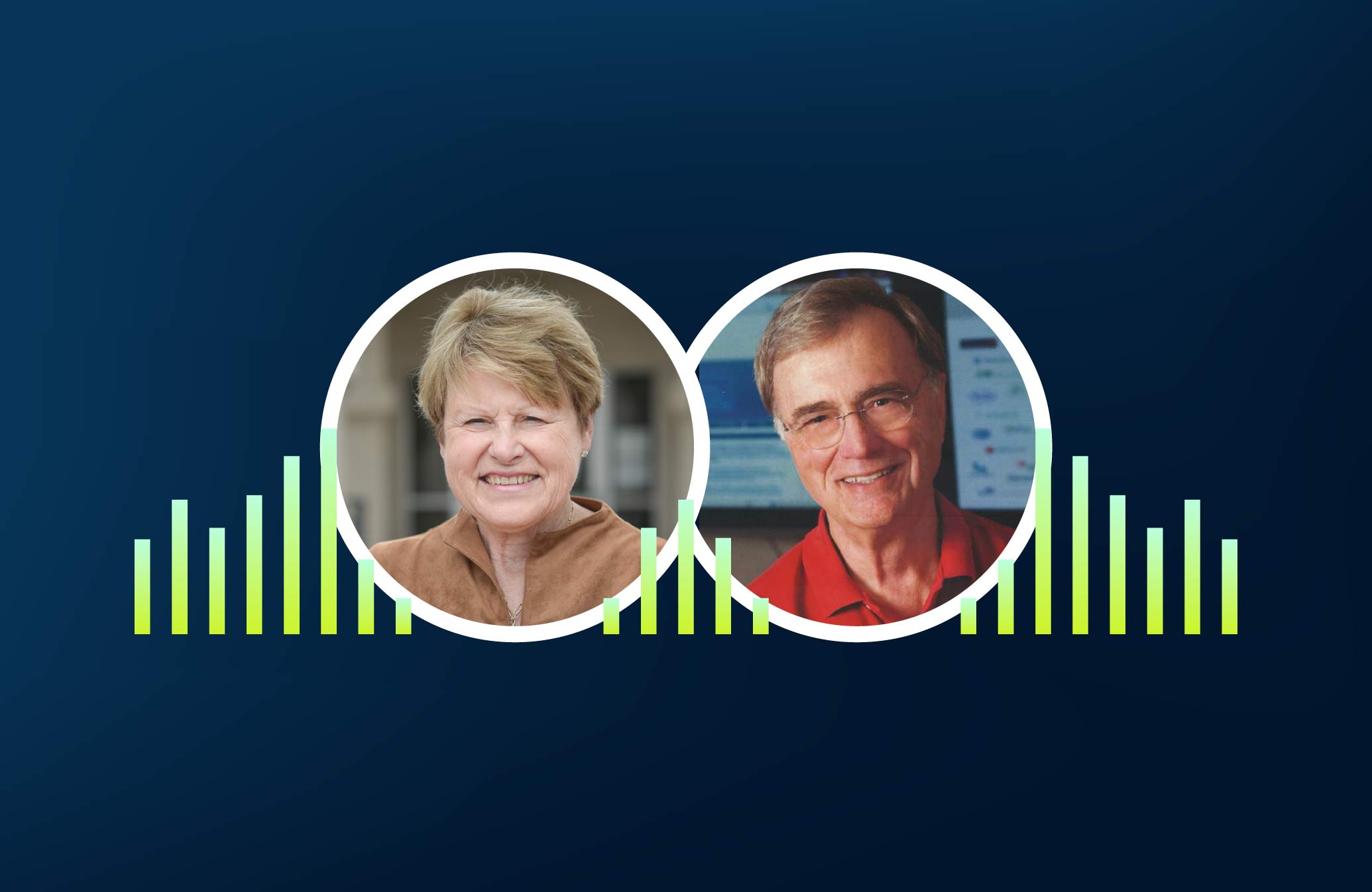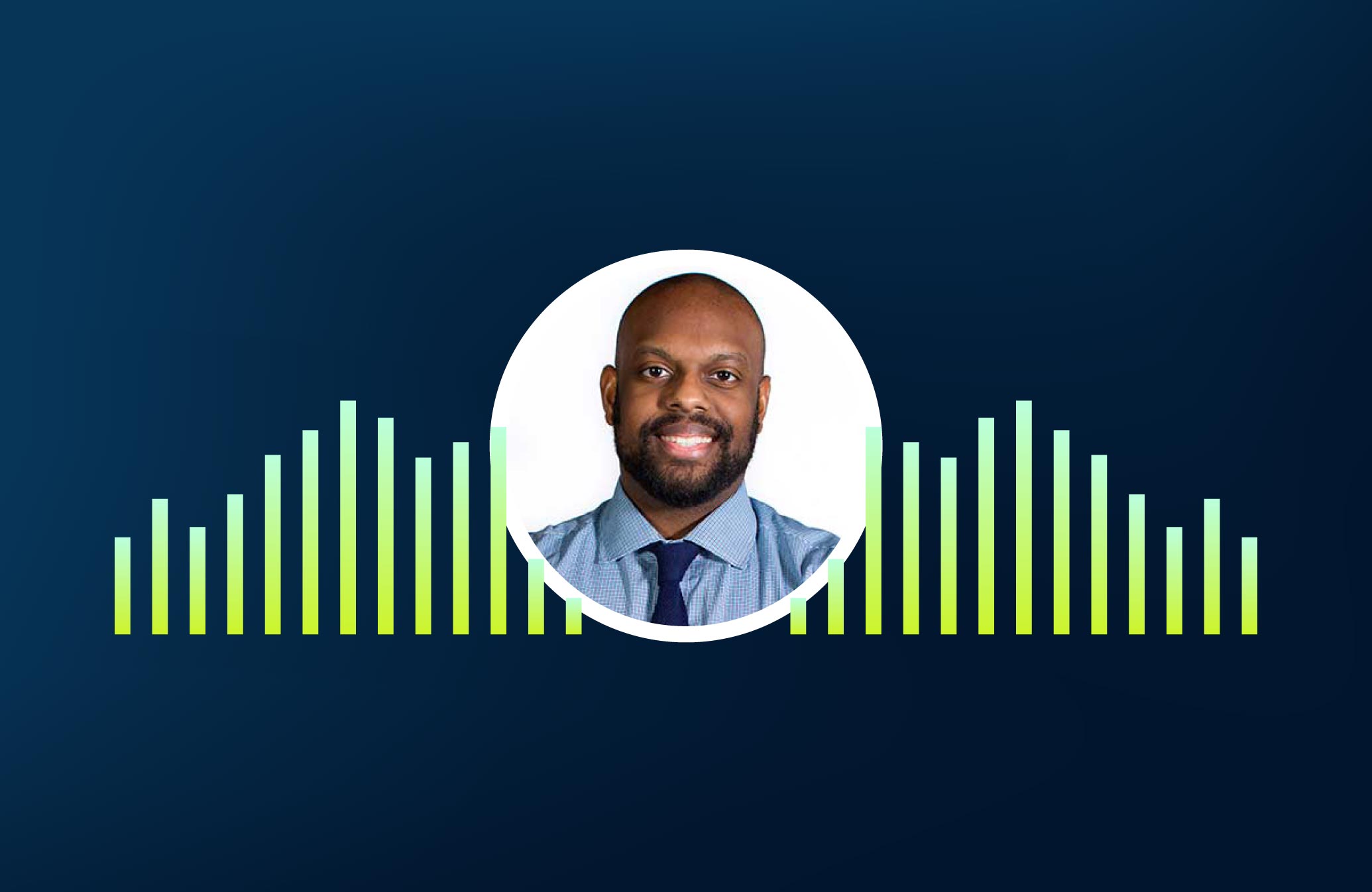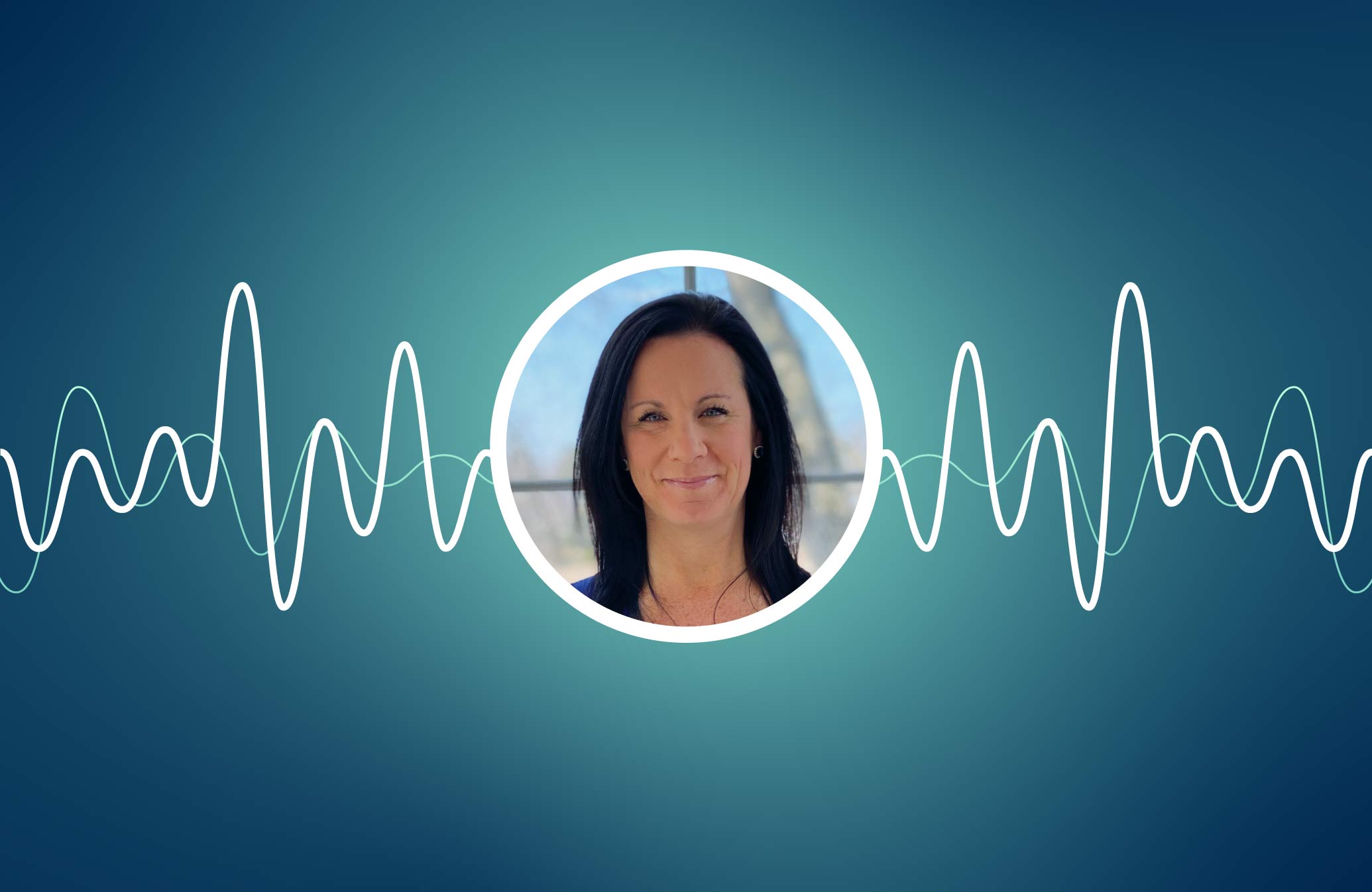Listen Now
Episode Transcript
Announcer: Welcome to RadioRev, podcasting from the heart of healthcare in Minneapolis, Minnesota. This is the podcast for change makers looking to do more than just health engagement. It’s about getting people to take action and do things that actually improve their health. It’s a radical idea, right? So we’re talking to the leaders, innovators, movers, and shakers who are bringing new ideas, inspiring others, and leading the way.
Jenn: Welcome to another episode of RadioRev. I’m your host, Jenn Dellwo. Thank you for joining us for another episode in our Social Determinants of Health series. As I’ve mentioned, each week this series dives deep into social determinants of health, offering various viewpoints on the topic with a different industry expert each week with the hope that you take away new ideas, perspectives, and are inspired to look at SDoH in a new light from all angles.
As a collective, the goal of these conversations is to inspire innovation and motivate the healthcare industry to work together to create meaningful solutions that help people live stronger, healthier lives. I’m excited to introduce our guests this week, June Simmons, President and CEO with Partners in Care Foundation, and Dr. Ray Woosley, Founding President of the Arizona Center for Education and Research on Therapeutics. June, Ray, welcome to the show. Thanks so much for joining us today.
June: Thanks for having us.
Ray: Thank you, Jenn.
Jenn: So, I like to start with a little bit of music trivia. What’s your favorite ‘80s song, or if you’d like, your favorite classic song?
June: For the ‘80s, I thought “Chariots of Fire” was an exciting, inspiring piece of music. {song plays}
Ray: Well, music has really changed with the COVID epidemic/pandemic, but it’s always been “Crazy.” I’m not sure that’s an ‘80s one. But more recently it’s become “Staying Alive,” which is an ‘80s, I think? {song plays}
Jenn: It’s very fitting for this time.
June: It is.
Jenn: All right. Well, why don’t we start with an introduction from both of you. If you could tell us about yourself, a bit about your career path, and the work that you’re doing now.
June: Well thank you. I was trained as a social worker, I have an MSW degree, and I soon got into healthcare and gradually became a healthcare administrator and innovator. I spent a number of years working at a community teaching hospital, and then I ran a visiting nurse association, and then founded Partners in Care Foundation. All of those were focused on the social determinants of health, on what happens in people’s lives that leads to health impairment or injury or that impacts recovery, with a large focus on people facing really difficult health challenges and what they can do to optimize their own outcomes and partnership with healthcare. So when we founded Partners in Care, now a 22-year-old not-for-profit, it was to build out new models of care to really help healthcare take into account the whole person by using proven interventions that really enhance consumer involvement, new behaviors for better health, and a whole set of services and resources to help people stay at home in good shape if they have disabling conditions, or if they’re older and facing the nursing home. We’re very interested in the best health for the most people in a true partnership between community and healthcare.
Jenn: That’s fantastic. Thanks for that background. Ray, what about you?
Ray: I began my career as a pharmacologist and worked in a small pharmaceutical company for a while but then decided to go back to medical school and became a clinical pharmacologist, studying the effects of drugs on humans. I trained in internal medicine and cardiology at Vanderbilt. Then after 13 years there I went to Georgetown University, where I chaired the Pharmacology Department. Then again after 13 years I came to Arizona as the Dean of the College of Medicine. I tell people “I do drugs” – I’ve never left my interest in medications and have spent most of my career finding ways to test new medicines. I was part of a study at Vanderbilt that found that some of the medicines we thought to be saving lives were actually causing lives to be lost. I became very interested in drug safety. In 2000, as I moved to Arizona, I was given a federal grant to create the Arizona Center for Education Research on Therapeutics, which focuses on drug safety and how to manage medications. For the last 20 years we’ve tried to improve the use of medicines. It was about in 2000 that the nation became aware; the Institute of Medicine came out with a report noting the large number of deaths caused by medication and medical errors. So, we’ve been working very hard and trying to find ways to use technology to manage the vast amount of information you need to know to prescribe and use medication safely.
Jenn: I’m particularly excited about this conversation today because the majority of our Social Determinants of Health season has been focused on Medicaid populations, but it’s really important that we not forget about Medicare when we talk about social determinants. June, I’m going to throw this question to you: What is the SDoH impact on Medicare?
June: Thanks. That’s a broad, broad question, and I’ll note that Partners in Care Foundation, our not-for-profit, does a lot of work around Medicaid populations, but Medicare is of great interest. The issues that we’re concerned about to help people achieve optimum health and independence are universal. Being poor drives higher risk. It is a social determinant of health, but everyone has social determinants of health that impact our results and the quality of life, whether it’s food or exercise that’s safe for our conditions, or medications. I have the honor of appearing here with Dr. Woosley because we both share a passion about medications as a major source of cure and danger. The form social determinants may take varies by income, but even under Medicare we can’t say that everyone on Medicare is not also on Medicaid. There are many, many Americans that are both Medicare and Medicaid, and those are among the higher risk. But even more at risk are what we call the ‘near poor,’ people who aren’t wealthy enough to just buy whatever they want, but aren’t poor enough to be eligible for a lot of the rescues that can come in and help people have safe housing, food, and the personal care that they need in order to remain in the community. But our focus, of course, is in the home/what happens in the home, so we are very interested in Medicare. And we also notice that when we see people on Medicaid, many of whom have Medicare, we drive down costs by addressing the social determinants of health. We make sure they have all the essentials they need to be safe, well fed, well housed, and well cared-for in the community — and that they have the medications they need. Guess who saves the most money? Medicare, because when you address social determinants of health for everybody you help people avoid getting issues or complications that both represent suffering and distress. No one likes to be sick or injured, but they also drive people to urgent solutions — the emergency room, the hospital, the nursing home — all of which are much more expensive. So, one impact of social determinants on Medicare is if we don’t address them, the cost of Medicare goes way up. Medicare is beginning to transform in the face of that. There are now some small glimmers of hope that they’re going to permit integrating social and community solutions with medical solutions. Because you know, 98% of care occurs by our own hand in our own home, 2% occurs in the hospital or the physician office. And so we think it’s very, very important to Medicare and the people who have Medicare to really address these major drivers of health outcomes. As we’ll notice, we’ll discuss a little more, that medications are pretty good at that.
Jenn: Ray, I’m going to pass this question to you. A big piece of our conversation today is about med adherence and medication. How is medication connected to social determinants of health?
Ray: I’ve learned a lot about this working with June. It’s opened my eyes to an entirely new universe. I’ve always known and have seen first-hand that the cost of medications can really be a deterrent to their safe use. People will break pills in half that shouldn’t be broken in half to get some of the medication into their body. But it’s the social environment, whether they can pay for pills, whether they can see well enough to read the tiny print that’s on the labels and how they manage their medications and how they don’t. They don’t comply to therapy that is sometimes rushed at them in an office visit. So the environment in which we take the medicines is as important as the medicines themselves. The elderly take enormous amounts of medications. One of the things that happens as you grow older is you have multiple medical problems, and the pharmaceutical industry has done a wonderful job of finding drugs for just about everything. That means when people have many problems, they usually take a lot of medicine. The national average for any person is 12 prescriptions per year. If you’re over age 65, the average is 17 prescriptions per year, and most people over 65 are taking at least five or six medicines continually. In the very elderly, some of the ones that we’ve been studying with June, they’re taking 10 to 20 medicines at a time, and they’re not able to manage those medicines well because of the social environment in which they’re trying to take those medicines. The cost of medicines was addressed with Medicare Part D, which I think was in 2006, where Medicare would start providing medications. This is good, but it just adds to the large number. And we know that if you’re taking two medicines there’s a chance for an interaction. If you’re taking 20 medicines there’s a guarantee that they’re going to interact and cause potential harm to the body, to the patient. So a lot of medicines can provide benefit, but the way you use them can be affected by your environment and your ability to manage them. Most people can’t manage them, so we’ve been working with June to see if we can’t combine technologies to help people manage their medications, and help care providers manage the way they prescribe and monitor medication use.
Jenn: You know, I’m assuming some of these interactions have an impact on SDoH and what those interactions of mediations can do. So I’d like to hear if you have some examples of how medications impact SDoH or vice versa.
Ray: Interactions that occur are usually caused by whether you’re taking the medicine or not. If you’re unable to afford some of your medicines and you stop taking them, the medicine that had been interacting with another can actually start causing problems that had been prevented by the other medication. So the ability to take medications regularly and accurately is probably the most influential of the social determinants of health, and then just a complex biology takes over after that. Whether you trust the prescription often determines whether you’re going to take it. Sometimes that trust is part of the placebo response and helps you respond to the medicine. But it’s the ability to manage these interactions—most pharmacy systems and doctors’ prescribing systems have alerts to tell you these many drug interactions. But the data show that doctors and pharmacists don’t trust these, and 95% of those warnings and alerts are just clicked right on by and are ignored.
June: So as we know, medications are one of the number one drivers of health outcomes for people with health challenges. There are, as Dr. Woolsey notes, a few themes to the issues. Of course, one is that people may see different providers who prescribe without knowledge of what else the person has, especially if they go in the hospital. We do a lot of work to see people in the home at least once after they leave the hospital. They had meds before they went in the hospital, they go in the hospital, they’re given a new set of meds to take home with them. It might be the same kind of med, but with a different name, shape, and color, and often they’ll go home and take them all — what they had before and what they have now. You get a very high prevalence rate; 25% of the people we see have what we call therapeutic duplication, where without knowing it they’re taking multiple versions of the same kind of class of drug, and it can be quite harmful. So, if their blood pressure meds are doubled up, it’s going to have a big effect, or any other kinds of classes of drugs. So that’s one, just the lack of coordination. A related one is the lack of full understanding of what your meds are for, how you should be taking them, and why it matters. People who are low income, they start cutting their dose in half, which ruins its efficacy. Or they’re low income and they don’t eat much. We had a woman who lost some of her appetite due to depression but also was poor. She was supposed to take her meds with food. Because she only eats lunch, she takes all her meds at noon. She takes multiple doses of the same medication all at the same time that are supposed to be spread out. That’s very harmful. So as Dr. Woosley would say, you have to take the right meds in the right way. If you take the wrong meds in the right way, you’ll hurt yourself. If you take the right meds in the wrong way, you’re going to hurt yourself. So I think understanding, so people can self-manage appropriately, is really another social determinate, about behaviors. There was a gentleman who was worried about his memory slipping a little bit, so he took all his meds in the morning—multiple blood pressure doses and sleeping pills. It’s really hard to have a good day when you’re taking all your sleeping pills when you wake up in the morning. Well I think the ability to access care that fully coordinated and centralized with all the meds is crucial. I think understanding and knowing how to take them and being able to do that, affording the medications, and having the ability to get them refilled and get them to your home under COVID. We have more delivery systems than we used to, but for a long time it’s been the case people maybe just could not access those meds. Now we have some meds that make pharmacists very suspicious and they won’t give you. So a lot of complicating factors that we consider fall under the social determinants of health that drive these challenging outcomes.
Jenn: Right. So we’ve talked a little bit about the challenges. Now I’d like to hear about the HomeMeds program—some of the results and success stories you’ve seen.
June: Yeah, I’d love to talk about the HomeMeds program of Partners in Care Foundation. It’s a very mature program based on research. Unlike Dr. Woosley’s work, it is based on non-medical personnel that can serve as detectives to go into the home and identify what we call the truth about medicine so we can take a full, comprehensive report to the prescribers, the physicians, the nurse practitioners, the pharmacists about what is really happening in the home. Because people, as we’ve described, sometimes have conflicting meds from various prescribers. But they also have over-the-counter meds. They’re taking pain meds or sleeping pills, and you think you’re going to also take Tylenol PM or you take things that interact improperly with some of your prescribed meds. This is important to know. So the HomeMeds program sends a social worker or a community health worker into the home to sit down and go through the meds, what they are. They go with the person to the refrigerator, to the bathroom, look by the La-Z-Boy, by the bed, and figure out what is it that people actually have and are taking and how are they taking them. That’s how we find the guy who’s on insulin, and we find out when he was in the hospital, he was taught how to take insulin. They showed him with an orange. They had him inject the orange so he’d learn how to do an insulin injection. He goes home, and it’s not working. The insulin isn’t working. Well it turns out when you sit at the kitchen table you can find out he’s still injecting the orange and eating it. He supposed to be injecting himself. So this ability to go in and actually discover all the vitamins, the supplements, the foreign meds, the prescribed meds, the old meds, the current meds, you’ve got a record of that electronically and can interview the person for signs and symptoms of adverse meds response. We look for dizziness, confusion, history of recent falls. We look for differing self-reported blood pressure, taken sitting and standing. We put all this into software, and it will alert up if there are particular issues that look like they should be reviewed, and that goes to a pharmacist who screens it and then forwards it onto the prescriber so that we can correct the things that are quite dangerous. There’s a 77% of falls risk in the home, much of which is caused by some of the medications people are taking. We follow people home from the hospital very often to reduce avoidable readmissions. By looking at the home and coaching the person to get to their physician for follow-up and gathering these meds, we find we can reduce the return to the hospital for complications that are avoidable. And we reduce these readmissions and this avoidable suffering by 40 – 70%. It’s an amazing reduction in people getting worse, feeling bad, reaching out, getting to the ER, getting to the hospital. Those kinds of findings I think are very powerful, and that’s what HomeMeds does.
Jenn: That’s incredible. You’ve clearly outlined the critical importance of community health workers to the success of this program, and you may have already answered this question, but can you talk a bit more about the role that community health workers play to ensure SDoH barriers are addressed in the population you serve?
June: You bet. It’s a new title to hear about in healthcare, so I think it represents a bold innovation. Typically in America we’ve gone to the hospital, we’ve gone to the ER, we’ve gone to the doctor, and we’ve been seen, we’ve been diagnosed, treated, given recommendations, and they send us home on our own. Now we’re trying to transform medicine into a more insightful consumer group with more support when they do go back to the home. So often you don’t need a nurse or a doctor or a pharmacist to drive to the home to see what’s going, but someone needs to go. Here’s an alternative workforce whose specialty is gaining the trust of the person, enough that they’re willing to let us into the home. So we can go in and sit down and really talk through what people are faced with. We can observe the realities that are there and bring these important issues about what is either going to enhance or what is undermining the health and safety of the person in the home. We don’t have enough nurses anyway, or enough doctors, so this extending workforce, social workers, community health workers, who have less education, these are a full array of a newly available, trained workforce who can work with decision support tools to do a full assessment of is it a safe home environment, what’s going on with the meds, what are the health-impacting self-care behaviors, and really bring that into a full partnership. So healthcare is really looking at a real person with real knowledge. We had a woman who kept falling and was injuring herself, and healthcare didn’t know what was going on there. She didn’t really know how to identify the source, but when the community health worker went in and sat at the kitchen table with her, they realized that the chairs in her kitchen had wheels. It was the instability of those chairs flipping and ending up with her falling that was critical. Some people have a lot of other problems. We saw one that had an adaptive walker that was broken so they weren’t using it. And so there are a lot of issues about adapting the home environment. We see a lot of things that if they’re addressed, they’re affordable and simple to address — lack of food, lack of safe environment—they can be solved and keep people safe, keep costs down, and keep suffering down.
Jenn: The work you’re doing is so interesting and so innovative, I just love hearing about it. Thank you for sharing. Speaking of innovations, what are you both seeing in the industry that excites you?
Ray: You won’t believe this answer, but it’s true. Honestly, the most exciting innovation that I’ve come across in 30 or 40 years of research is the ability to work with June and find out what medicines people are taking. I spent more than 20 years trying to develop pharmacogenetic testing: The human genome’s promise that you take the right medicine at the right time for the right reason. All this personalized medicine that people have talked about — I couldn’t tell if it was personalized because I couldn’t tell what people were taking. So I’m really excited about the ability to find out for the first time what someone is taking and why, because then I can find out if it’s helping them or hurting them. And that’s just the beginning. We looked at community health centers and prescribing drugs and what was actually being taken, and we found that people often don’t tell you everything that they’re taking. They’re embarrassed by it, they don’t want to say they’re on an anti-depressant, they don’t want to say that they’re taking a medicine for herpes or something like that. We found that 40% of the medicines the medical record thought were being taken were not, and another 40% of medicines that were not in the medical record were being taken. So I think the real-world environment that June’s people work in and the factors they’re addressing are the most exciting to me. Now I’ll admit I’m a gadget nut, so things like home monitoring of your EKG where you can simply take something about the size of a credit card and let it record your electrocardiogram is going to change everything we’re doing. But without the other really important things of knowing which medicines you’re taking and where your medical records are, how do you manage all this information? Clinical decision-support tools like HomeMeds and the ones that we’re developing at AzCERT are going to be essential in helping doctors and caregivers and patients manage their medications and their healthcare. I think technology will make a big difference, but I think just the practical aspects of the real world of medical care that are being addressed with HomeMeds and my partners are some of the most exciting innovations for me.
June: It’s a knock-out, isn’t it? I love that. Thank you, sir. Well, to me, one thing that’s really driving a great deal is that we live in a technological age, and we have the ability to measure results and causes. So measurement, I think, has been a force, and you can hear Dr. Woosley speaking of measurement. It has let us have this conversation because it has led to the recognition of social determinants of health. It’s only in the last several years that this has become common language. And look now you’re abbreviating it, SDoH. We all know what that means. I spent several decades waiting for that to be the case. To me, that’s a bold innovation, and it leads us then to where we’ve been interested for so long, which is to see what really happens at home, where most health is fashioned, for good or for ill. So pulling those together and finding healthcare beginning to look at really partnering with community-based organizations like ours, to really look at whether people have enough food, do they have a safe environment where they’re not going to trip and fall, do they have access to the right medicines, those are massively important. That has led us also to a big focus on evidence-based health self-management programs that have been available increasingly in the community so people can learn how to succeed in caring for themselves and their families. The latest is emerging under COVID because now we can’t go to the home at this time. I mean not safely, not readily, not frequently. We live in an age of technology, so it’s been very exciting to see all across the country and certainly all across our organization the development of new virtual interventions for medicine and for community. Telehealth: you can get your doctor to look at you on Zoom. You can reach out for help and don’t even have to drive somewhere. No one has to drive to you, so we’re protecting the environment at the same time. I think the ability to take a lot of these resources — we’ve been building workshops for people to learn how to manage their diabetes, their hypertension, their falls risk and having them drive to those workshops. Now we’re putting those workshops in Zoom on two-way television delivery, letting people connect who now may be too isolated under COVID, they can connect and see each other with these new kinds of rather affordable devices. It’s a big move to overcome the digital divide and really connect us in bold new ways using all we’ve learned and are learning about new resources through these changes in tools to help people and to help people help themselves.
Jenn: Definitely. COVID has pushed all of us to innovate and try new things and do things differently.
June: It’s amazing.
Jenn: I love that you mention that. So my last question for both of you, which might be a challenge to answer because we are quarantining right now, but what’s the coolest thing each of you has done lately?
Ray: Well, the only good thing I can think of about COVID is the fact that our son has had to stay at home with us for the last couple of months. The coolest part of that was every night sitting down at the TV to play Jeopardy together. So there are some good things to come out of this for us. And I’ve gotten to know my dog better than ever before.
Jenn: Is that a good thing?
Ray: That’s a very good thing.
Jenn: Great. How about you, June?
June: Those are great things, Ray. I know that the animal shelters are empty because everyone’s been adopting. We did transition 175 staff members to work from home virtually overnight, so that was amazing. But on the personal side, I must say it’s a beautiful spring here, and I’m very proud of the roses I’ve been able to cut everyday and keep flowers all around the house. I’ve had some good success with a little more gardening around the house.
Jenn: That’s great. Well thank you both so much for this conversation today. This has been awesome, and I think our listeners are really going to love it.
June: Thanks for the opportunity.
Ray: Thanks again.
Announcer: Thanks for joining us for the RadioRev podcast brought to you by Icario. If you found today’s conversation as informative and energizing as we did, please take a moment and subscribe to the podcast. As always, we invite you to learn more about us and check out all of our content at dev-revel-health.pantheonsite.io/radiorev.
Inside the Episode
In this episode we are joined by June Simmons, President & CEO with Partners in Care Foundation and Ray Woosley, Founding President of the Arizona Center for Education and Research on Therapeutics. They discuss the critical role of community healthcare workers in the HomeMeds program and share stories about the incredible impact this program has had on members. Key discussion points in this episode include:
- The SDoH impact on Medicare populations
- Examples of how medications relate to SDoH
- How community healthcare workers address SDoH barriers and drive positive health outcomes
To keep the conversation going, be sure to connect with June and connect with Ray on LinkedIn.
“98% of care occurs by our own hand in our own home, 2% occurs in the hospital or the doctor’s office. We think it’s very, very important to Medicare and the people who have Medicare to really address these major drivers of health outcomes.”

June Simmons
President & CEO at Partners in Care Foundation“The ability to take medications regularly and accurately is probably the most influential of the social determinants of health and a complex biology takes over after that.”

Ray Woosley
Founding President of the Arizona Center for Education and Research on Therapeutics
Can’t get enough of RadioRev?
We’ve got an entire season dedicated to social determinants of health to keep you inspired! Listen to the next episode in the series for another new perspective on SDoH.




